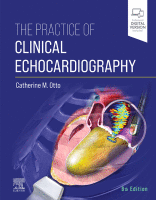Physical Address
304 North Cardinal St.
Dorchester Center, MA 02124

Single-ventricle anomalies are a diverse group of congenital heart defects with one common feature: a single dominant ventricle supports the systemic and pulmonary circulations. Most patients born with single-ventricle anomalies undergo the Fontan operation. The Fontan operation has several variations,…

Complete Transposition of the Great Arteries Background Complete transposition of the great arteries (TGA, also called d -loop TGA [ d -TGA]) is a relatively common cyanotic congenital heart defect that accounts for 5% to 7% of congenital heart disease…

Abnormal conotruncal development results in defects involving the ventricular outflow tracts and great arteries. Developmental abnormalities in the conotruncus may result in (1) abnormal ventriculoarterial alignments and connections; (2) outlet septation defects; or (3) outlet hypoplasia, stenosis, or atresia. The…

Pulmonic Valve, Subpulmonic, And Supravalvular Pulmonary Stenosis Pulmonic Valve Stenosis Pulmonic valve stenosis is usually an isolated lesion. It occurs in 8% to 10% of individuals with congenital heart disease (CHD) and is the most common form of right-sided obstruction.…

Left-sided anomalies are prevalent among adults with congenital heart disease. They can occur in isolation or with associated defects ( Fig. 42.1 ). Patients usually require lifelong monitoring because native lesions may progress and postintervention complications may develop. Echocardiography is…

Approximately 1 in 100 adults have congenital heart disease. Congenital heart defects (CHDs) can be characterized as simple, moderate, or severe in complexity, based on the morbidity and mortality associated with each of these lesions. Echocardiography plays a central role…

Echocardiography is safe for use during pregnancy and is an important tool in evaluation of pregnant women with heart disease. It is used for risk stratification, follow-up during pregnancy, and diagnosis of women who develop complications during pregnancy. The signs…

Prevalence and Impact of Atrial Fibrillation Atrial fibrillation (AF) is the most common cardiac arrhythmia, with an estimated prevalence of more than 3 million Americans in 2012. Although the true prevalence of atrial flutter (AFL) is not known, it is…

Background Cardiac Embolism The heart and the aorta are a potential source of embolism to the systemic circulation. Because the brain is the most frequent target, investigation of cardiac embolic sources is especially aggressive after a cerebral embolic event. Most…

Rheumatologic diseases are chronic inflammatory states caused by autoimmunity. They are more common in women than in men (with the exception of ankylosing spondylitis and Behçet disease), and they usually manifest between the second and fifth decade. Cardiovascular involvement is…